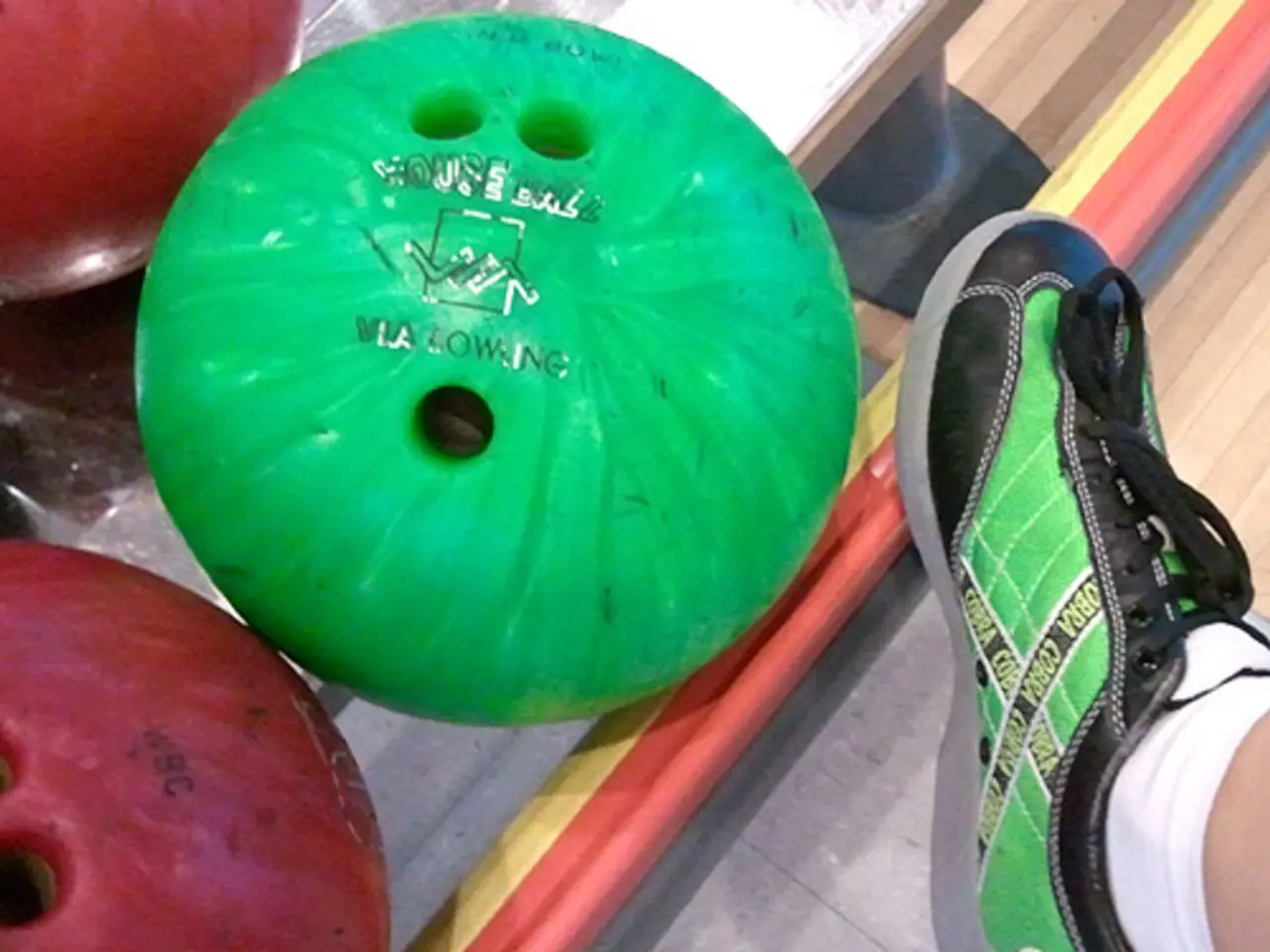Strengthen Your Pelvic Floor at Any Age: A Experienced Pilates Enthusiast Promotes One Exercise as Key
In a world where health and wellness are paramount, one often overlooked aspect is the importance of pelvic floor strength. This crucial muscle group, supporting pelvic organs and contributing to continence and sexual function, can significantly improve one's quality of life at any age.
Pelvic floor muscles are particularly important for women in midlife, as hormonal changes can cause them to weaken, leading to issues such as urinary incontinence and decreased sexual function. To counteract these effects, experts like Vanessa Michielon, a Pilates, yoga, and dance expert, recommend pelvic floor exercises for all ages.
Michielon's recommended exercise involves a Pilates ball and encourages deeper, slower breathing. During the exercise, one should inhale gently through the nose and allow the pelvic floor to fully relax on the ball. Upon exhalation, the tailbone, pubic bone, and sit bones should be slowly and gently drawn towards each other and up towards the belly button.
This exercise is designed to be easily incorporated into one's regular workout routine, and can be repeated eight to 10 times at the start or end of a workout. It is recommended to perform it slowly, with a pause at the end of each exhalation to feel the contraction. Michielon advises doing this exercise two or three times per week.
Kegel exercises, which involve contracting and relaxing the pelvic floor muscles, are another effective method for pelvic floor strength. These exercises can prevent and treat urinary and fecal incontinence, enhance sexual sensation, and improve core stability since the pelvic floor works in coordination with deep abdominals, spine stabilizers, and diaphragm muscles.
Additional exercises including bridges, sit-ups focused on pelvic tightening, and core strengthening movements (such as in yoga or tai chi) can complement Kegels by supporting overall core function and pelvic floor engagement.
The benefits of pelvic floor strength are numerous. Improved bladder and bowel control, enhanced sexual health, better core stability, and overall quality of life are just a few. Strengthening the pelvic floor can also potentially better sexual function.
Pelvic floor exercises offer preventive and rehabilitative benefits, making them crucial at every stage of life. Michielon emphasizes the importance of consulting a healthcare professional before trying any new pelvic floor exercises.
For those seeking achievable workout ideas, health tips, and wellbeing advice, the Fit&Well Newsletter is a valuable resource. By subscribing, one can stay informed and motivated on their journey towards better pelvic health.
[1] Mayo Clinic. (2021). Pelvic floor exercises: How to do Kegel exercises. https://www.mayoclinic.org/healthy-lifestyle/sexual-health/in-depth/kegel-exercises/art-20045346
[2] NHS. (2021). Pelvic floor exercises. https://www.nhs.uk/live-well/exercise/pelvic-floor-exercises/
[3] American College of Obstetricians and Gynecologists. (2019). Urinary Incontinence in Women. https://www.acog.org/womens-health/faqs/urinary-incontinence-in-women
[4] Holograms of Health. (2021). The Transformative Movement Method. https://hologramsofhealth.com/transformative-movement-method/
[5] Cleveland Clinic. (2020). Pelvic floor dysfunction: What you need to know. https://my.clevelandclinic.org/health/diseases/17137-pelvic-floor-dysfunction
- Engaging in pelvic floor exercises, like Kegels or the exercise recommended by Vanessa Michielon involving a Pilates ball, can help maintain pelvic floor strength, which is beneficial for both women's and men's health-and-wellness, especially during menopause.
- Regular fitness-and-exercise regimens, such as yoga or tai chi, not only contribute to overall fitness but also support pelvic floor engagement and contribute to better women's health, including addressing issues related to urinary and fecal incontinence.
- Incorporating exercises like bridges, sit-ups focused on pelvic tightening, Kegels, and other core strengthening movements can holistically promote fitness-and-exercise and improve pelvic floor and overall wellness, especially for those in midlife.
- Staying informed about the latest science and health-and-wellness trends, including pelvic health information, can aid individuals in maintaining and improving their fitness-and-exercise routines with resources such as the Fit&Well Newsletter.




